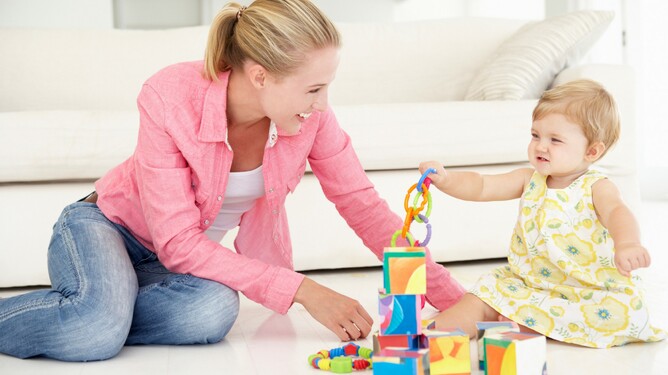First Words and The Importance of Babbling
As a Speech Pathologist a common question parents ask is “what can I do at home that will encourage my child to start talking?” Knowing when a child will start to talk can be hard to pin point as it varies from child to child. Generally speaking, by 18 months, most children should have about 20 words in their vocabulary, and could even be beginning to link two words together.
There are some factors that can predict the onset of first words. Babble and pointing are two really important early skills, and delays in these skills could indicate risk of an ongoing communication difficulties.
McGillon and Colleagues reported that, “when it comes to making the initial transition to conventional language… it is the onset of babble that paves the way for kids first words.”
Sometimes it is easy to understand the message our child is trying to send us when using babble however it can also be tricky or unclear whether babbling has a message behind it, making it difficult for us to know how to respond.Here are a couple of simple tips to help you notice your child’s babble and know how to respond:
Stop and wait – sometimes when our kids aren’t talking we tend to fill the space with our own talking… it’s very easy to do! If we try pausing and waiting for out little one to initiate, this will encourage them to make sounds.
Observe your child – while you are waiting observe your child. This will help you figure out whether their babble is trying to send you a message or not. If you can see your child looking or pointing to something while babbling it is likely that the babble is intentional and they are trying to send you a specific message. If you observe this you can try to act as your child’s interpreter by putting their message into words. This will eventually build vocabulary as you are providing specific labels for things they are trying to communicate. What exactly do I mean by being an “interpreter” or “providing specific labels” – say your little one is looking at a dog and saying ‘da da da’ you could interpret this by pointing to the dog and saying “there is a dog”
If you would like more information about how babbling develops and the importance of babbling have a look at the Hanen Centre’s article “baby babble – a stepping stone to words”.
If you are concerned about your child’s communication development or have any questions, we are only a message or phone call away.
Baby Babble – a stepping stone to words” - http://www.hanen.org/Helpful-Info/Articles/Baby-Babble--A-Stepping-Stone-to-Words.aspx
Written by
Jessica Dobe (BSpath, CPSP) - Principle Speech Language Pathologist

